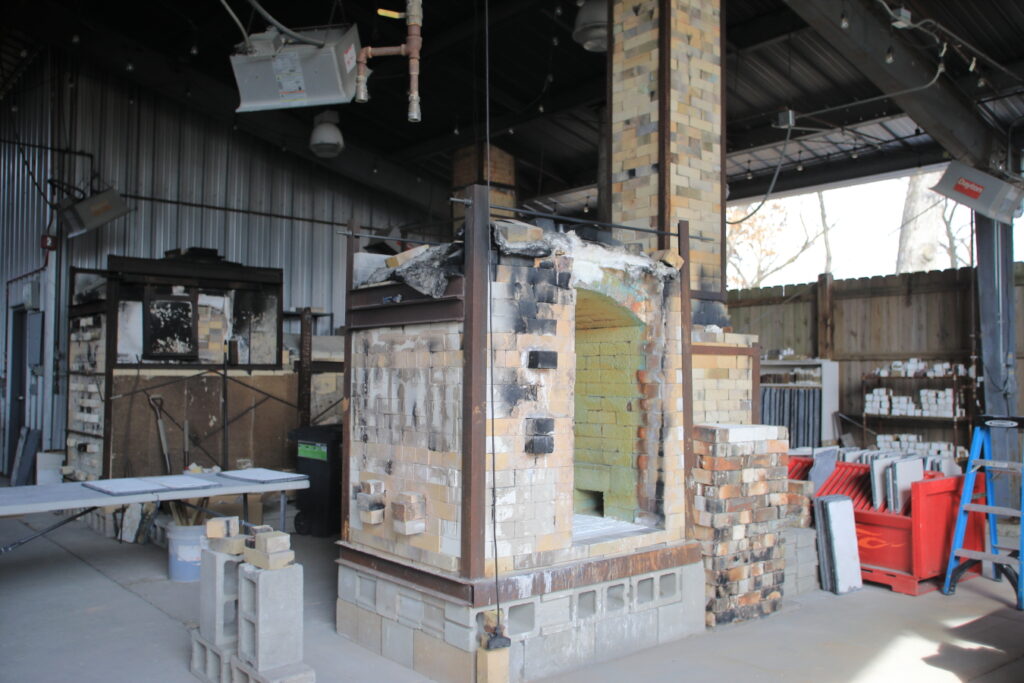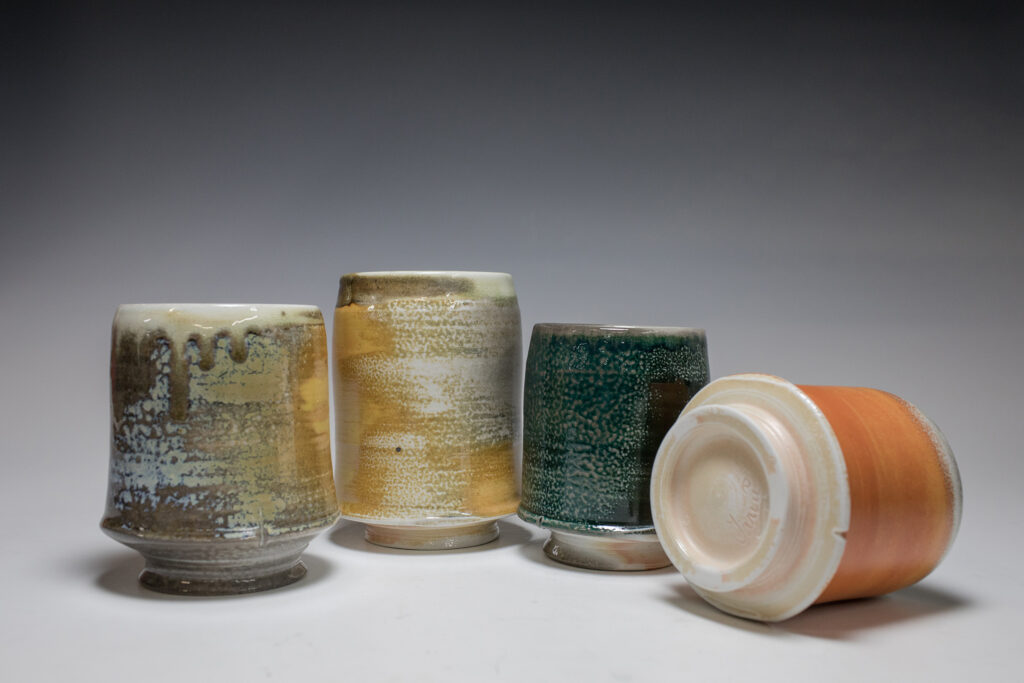Soda firing is an atmospheric firing technique where “soda” is introduced into the kiln near top temperature (2350°, ∆10). The soda that we use is: sodium bi-carbonate, also known as baking soda (the Arm and HammerTM kind), and sodium carbonate, which is also known as soda ash.
“Soda ash is the trade name for sodium carbonate, a chemical refined from the mineral trona or sodium-carbonate-bearing brines (both referred to as “natural soda ash”) or manufactured from one of several chemical processes (referred to as “synthetic soda ash”). It is an essential raw material in glass, chemicals, detergents, and other important industrial products.”
– USGS
Soda, or sodium oxide (Na2O), is an active ceramic flux known for its bright color response in glazes. It is chemically related to two other alkaline oxides: potassia (K2O) and lithia (Li2O). Soda becomes unstable above 2192°F (1200°C), making it impractical as the sole flux in high temperature glazes, unless introduced in feldspathic form. However, its ability to volatilize at high temperature makes soda highly suited to vapor glazing. When sodium chloride or carbonates are introduced into a kiln at high temperature, they produce sodium oxide in vapor form. Where that vapor comes in contact with clay surfaces, it produces a glaze with a very simple composition: soda, alumina, silica. Common sources of soda for vapor glazing include sodium chloride (salt) and sodium carbonates (soda ash, sodium bicarbonate), although sodium hydroxide (NaOH) has also been used. Borax (Na2B4O7•10H2O) is often used as a supplementary source of soda.
The soda vaporizes and is carried on the flame throughout the kiln. The soda vapors create a glaze when it lands on a piece (or a kiln post, or the wall of the kiln). Wherever the flame travels- so does the soda. When placing the pieces in the kiln during loading, you have to think carefully about when and where you want a piece to get lots of soda, or when and where you want a piece to be more protected. The kiln must be evenly loaded because the flame will travel on the path of least resistance (and therefore the soda will also be traveling on the path of least resistance). You also have to think about whether or not the piece is glazed. The soda is basically a glaze, and when two glazes mix, they can react chemically with one another and run down the side of the piece. It’s beautiful when you can control the run- but can be disastrous when it gets away from you! Soda ash and baking soda, produce carbon dioxide instead of hydrochloric acid. The soda doesn’t get into all the nooks and crannies like the salt does, but it does produce brighter and more vivid colors. Pots are usually glazed with an interior or “liner glaze” because the soda vapors won’t work their way into those hard to reach places. You can achieve a rich glossy surface that is heavy with soda, or a pebbled surface that is also referred to as an “orange peel” texture. This is often juxtaposed with a “drier” area of the clay that wasn’t hit directly with the soda. It’s all of these varied surfaces together that make up the rich look and feel of a soda fired pot. 30 years ago, when soda firing first began, most ceramicists were just trying to mimic the effects of salt firing. In the last 5 years that has changed. The true characteristics of soda firing are unique and are something to explore and achieve.

Brick Soda kiln at Waubonsee Community college
The soda vapors aren’t actually colored, but they are reacting with the alumina, silica and iron in the clay (and slips) to create the various colors of flashing, and associated textures. The resulting colors can be a range of oranges with yellow and red tones, to rich browns, golds and tans. If there is some copper in the kiln, there can be pink blushing. Or a cobalt glaze on a piece can cause a blue twinge to the soda. Sometimes the carbon from the firing can add a gray hue that can look like shark skin on porcelain.
So perhaps now you know a little bit more about soda firing! Next Blog Japanese style Anagama Kiln at Waubonsee community college
